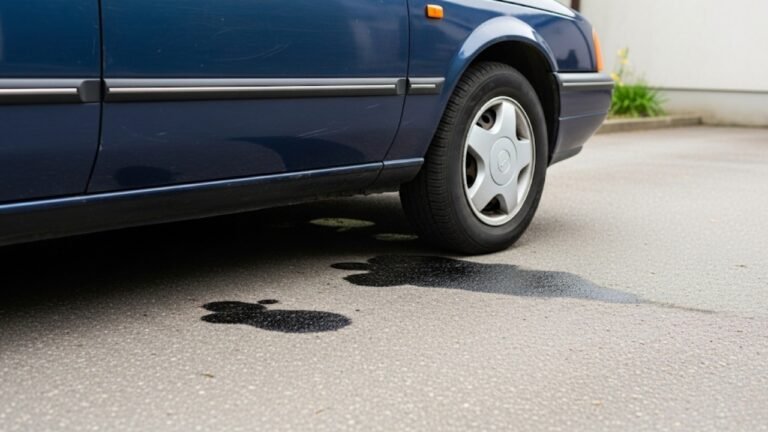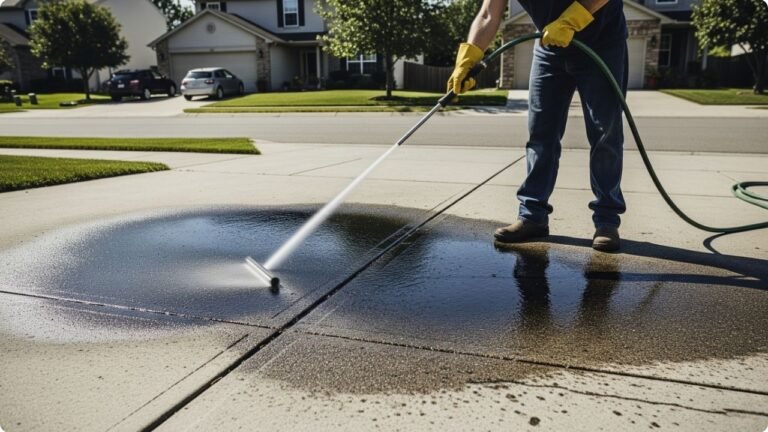How to Change Oil in a Car Step by Step

Changing your car’s oil might sound intimidating—like something best left to pros at a shop with greasy overalls and decades of experience. But guess what? You can do it yourself. And not only can you do it, but you might also enjoy it. It’s like learning how to make coffee from scratch instead of always hitting the drive-thru. Once you learn how to change oil in a car step by step, you’ll feel proud, save money, and maybe even look forward to getting your hands a little dirty now and then.
I still remember the first time I changed my car’s oil. I was nervous, had a few YouTube videos paused mid-frame, and spilled a bit more than I wanted to—but the pride afterward? Unmatched. This guide isn’t just about directions; it’s about building confidence.
We’ll walk through every step slowly, clearly, and with stories, tips, and a touch of humor. Whether you drive a ten-year-old Civic or a shiny new pickup, this guide is for you.
Why Changing Your Oil Matters More Than You Think

Over time, oil breaks down, collects grime, and loses its magic. Neglecting it is like not brushing your teeth for six months—it’s not just messy, it’s damaging.
Here’s what happens when you skip oil changes:
-
The engine wears out faster.
-
Fuel economy drops.
-
Your car runs hotter.
-
Worst-case scenario? The engine dies. And that’s expensive.
By learning how to change oil in a car step by step, you’re giving your car a longer life and yourself peace of mind. And honestly, once you do it a couple of times, it becomes second nature.
Tools You’ll Need: The Ultimate DIY Oil Change Kit
Let’s be real—having the right tools is half the battle. When I first tried this, I didn’t even own a wrench. But don’t worry, you don’t need a fancy garage or a pit crew. Just gather the basics below, and you’re good to go.
Here’s your must-have checklist:
| Tool/Item | Why You Need It |
|---|---|
| New engine oil | To replace the old oil. Use what your car recommends. |
| Oil filter | The new filter catches grime and metal shavings. |
| Wrench/socket set | For removing the drain plug. |
| Oil filter wrench | Makes removing the old filter easier. |
| Oil catch pan | Catches the old oil as it drains out. |
| Funnel | Helps pour oil neatly. |
| Gloves & rags | Keeps things clean(ish). |
| Jack and jack stands | If your car sits low, you’ll need to lift it. |
You might already have some of this stuff. If not, most auto parts stores sell kits for first-timers. Just be sure to check your car’s manual to find out what kind of oil and filter you need. That little book is your best friend here.
Step 1: Warm Up the Engine (But Not Too Hot!)
Here’s a pro tip: warm oil drains better than cold oil. It’s thinner and flows more easily. So run your engine for about 3 to 5 minutes before starting. Don’t go on a full road trip—just enough to warm things up a bit.
I once made the rookie mistake of doing this after a highway drive. The oil was scorching, and I burned my fingers. So yes, heat it up, but be careful. You want it warm—not lava.
This step helps you get all the old oil out of every nook and cranny inside the engine. Skipping it can mean leftover sludge that mixes with your new oil—not ideal.
Step 2: Get Your Car Ready and Safe
Park your car on a flat, level surface—preferably your driveway or garage. If the front of your car sits too low, use ramps or a jack to lift it slightly. Always, always use jack stands if you’re going under the car. Never trust just the jack.
Engage the parking brake and chock the rear wheels. A rolling car is a nightmare you don’t want to experience.
Put on your gloves, roll up your sleeves, and take a deep breath. This is the real beginning of learning how to change oil in a car step by step, and you’ve got this.
Here’s a little tip I learned from a friend who’s a mechanic: place all your tools on an old towel or mat near you. It keeps things clean and makes sure you’re not reaching around like you’re on a treasure hunt.
Step 3: Drain the Old Oil (Slow and Steady)
This is the fun (and messy) part.
Slide under your car (safely) and locate the oil drain plug. It’s usually a bolt at the bottom of the oil pan. Once you spot it, place your drain pan underneath.
Using a socket wrench, slowly loosen the bolt. It may take some elbow grease. When it’s loose, remove it quickly and let the oil flow into the pan. It can gush out faster than you expect—like popping a soda after a long shake.
Give it time—5 to 10 minutes—to fully drain. Don’t rush. Every last drop that comes out is dirty oil your engine doesn’t need anymore.
While waiting, I usually sip a coffee or check my phone (just don’t forget you’re under a car).
Step 4: Remove and Replace the Oil Filter
Next up is the oil filter—that round, can-like thing usually near the oil pan. Use an oil filter wrench to loosen it. Be prepared—some oil might spill out when it comes off. That’s normal.
Once off, check that the rubber gasket didn’t stick to the engine. If it did, peel it off gently. Two gaskets = a guaranteed leak.
Before putting on the new filter, here’s a cool trick: dip your finger in the new oil and rub a thin coat around the new filter’s rubber seal. It helps create a better seal and makes it easier to remove next time.
Screw the new filter on hand-tight only. Don’t overdo it. It needs to be snug, not cranked like a jam jar in a tornado.
Step 5: Add New Oil Like a Pro
Now that the old oil is out and the new filter is in, it’s time to pour in the fresh engine oil.
Pop the hood and locate the oil filler cap—usually marked with an oil can icon. Remove it and place a funnel in the hole.
Check your owner’s manual to see how much oil your engine needs. Then, slowly pour it in. Keep an eye on the bottle and try not to spill. Go slow—it’s not a race.
When you’re done, replace the cap and wipe any drips. You’re almost there. Learning how to change oil in a car step by step is really just a series of simple wins. And this is one of them.
Step 6: Check Oil Level and Top Off If Needed
So you’ve added the new oil—great! But wait. Don’t slam the hood shut just yet. You’ve got to double-check the oil level to make sure everything is perfect.
Let the oil sit for a few minutes. Then, pull out the dipstick (you’ll find it near the engine, usually with a yellow or orange handle). Wipe it clean, stick it back in, and pull it out again.
You want the oil level to land somewhere between the “min” and “max” marks. Ideally, just under the top line. If it’s too low, add a little more. If it’s too much, you’ll need to drain a bit out—yeah, it’s annoying, but better safe than sorry.
When the oil level is right, you’ll feel that sense of satisfaction creeping in. You just nailed a big part of learning how to change oil in a car step by step—and you’re doing it like a champ.
Step 7: Start the Engine and Let It Settle
Alright, now’s the moment of truth. Start your engine.
Let it run for a minute or two. Don’t rev it or floor it—just let it idle. This helps the new oil circulate throughout the engine, filling the oil filter and coating every moving part.
While it runs, check under the car for leaks, especially around the oil filter and the drain plug. No drips? You’re golden.
After turning the engine off, wait 5–10 minutes and check the dipstick one last time. If needed, top off a little oil. This tiny step makes sure your engine is perfectly prepped for the road ahead.
I always listen closely at this point—like a parent checking on a sleeping baby. Smooth engine sound? Clean dipstick? Job well done.
Step 8: Dispose of the Old Oil Responsibly
You’ve probably got a pan full of old oil now. It’s nasty, black, and smells a bit like burnt popcorn. Whatever you do—don’t pour it down the drain or in your yard. It’s toxic and harms the environment.
Most auto parts stores (like AutoZone or Advance Auto Parts) will take your used oil and filter for free. Just pour the oil into a sealed container—an empty oil jug works fine—and drop it off.
This step is part of being a responsible DIY mechanic. You’re saving money, yes, but you’re also doing your part for the planet. That’s something to feel good about.
Step 9: Reset Your Oil Change Light (If Your Car Has One)
If your car has an oil change reminder light, you’ll want to reset it so your dashboard doesn’t keep nagging you. This process varies depending on the car brand and model.
Usually, you’ll:
-
Turn the key to the “on” position (without starting the engine).
-
Press and hold the trip reset or oil reset button.
-
Wait until the light flashes or resets.
If you’re unsure, just Google “[your car make + model] oil light reset.” I promise you, someone out there has posted a 30-second how-to video.
It’s a small detail, but it closes the loop on everything. It’s the digital high-five from your car saying, “Thanks, buddy.”
Bonus Tips to Level Up Your Oil Change Game
Doing an oil change is a great skill. But let’s take it from “just okay” to “next level” with a few extra tips I’ve picked up over the years:
-
Keep a maintenance log. Write down the date, mileage, and oil brand you used.
-
Buy oil and filters in bulk. It saves money in the long run.
-
Use gloves and a cardboard mat. Your clothes will thank you.
-
Watch the weather. Changing oil in cold weather is tougher since oil flows slowly.
-
Label your oil containers. So you don’t mix new with used by accident (yes, I’ve done that).
These aren’t required, but they make things smoother and more enjoyable. And the more you do this, the better (and faster) you’ll get.
Quick Recap: Oil Change Steps at a Glance
To make this crystal clear, here’s a quick step-by-step summary of everything we covered:
-
Warm up your engine a little.
-
Park on level ground and secure the car.
-
Drain the old oil carefully.
-
Remove and replace the oil filter.
-
Add fresh engine oil slowly.
-
Check the dipstick level.
-
Start the engine and listen.
-
Dispose of old oil properly.
-
Reset the oil change light.
It’s really that simple when broken down into clear steps. The keyword here is step by step—follow each one, and you’re golden.
Closing Thoughts: You’re Not Just Changing Oil—You’re Building Confidence
Learning how to change oil in a car step by step might seem like just another chore. But honestly? It’s more than that. It’s a gateway to understanding your car better. It’s a way to save money, take control, and feel empowered.
You don’t need to be a mechanic to do this. You just need a bit of patience, a few tools, and the willingness to try. Each time you do it, you’ll feel more confident—not just in your car, but in your own hands.
I’ve done oil changes in the rain, with a flashlight, even once in socks (don’t ask). Every time, it reminds me of how doing things yourself brings a sense of pride that no quick lube shop ever can.
So next time someone says, “Oh, I just get mine done at a shop,” smile. Because you know how to change oil in a car step by step, and you’ve actually done it.






